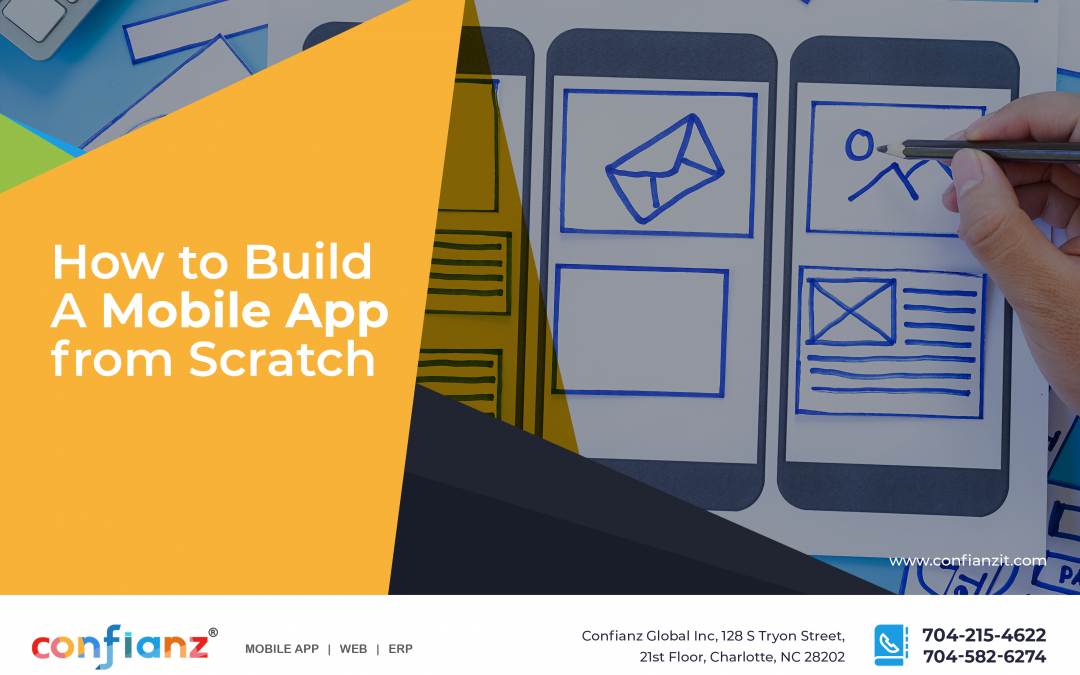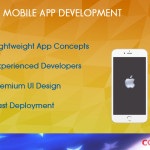More people are using mobile devices than ever before. On average, smartphone users check their phones 262 times a day or once every five minutes.
Even more interesting is how many people use mobile apps. Recent studies show that 88 percent of the time smartphone users spend on their mobile devices is spent on apps.
With the increasing usage of mobile apps, now is a great time to build an app.
In this article, we’ll walk through the steps you’ll need to take to build a mobile app from scratch. No matter the purpose behind your app, we can help you take it from the idea stage to the app store.
Steps to Building a Mobile App
You can think of building a mobile app in terms of three primary phases—pre-development, development, and post-launch.
Within each of these phases exist several sub-phases that are necessary steps to take if you want to build and launch a mobile app successfully.
Pre-Development Phase
During the pre-development phase, you’ll need to carefully consider all your options so that you can make smart decisions during the other two stages.
Step 1: Define your goals
Having end goals in mind will help you determine what type of app to build.
For example, if you want to build an app for your personal use—like if you’re a contractor and need a way to keep track of hours and clients—you might be able to get away with a cookie-cutter approach that has limited functionality.
On the other hand, if you’re building an app with the intent to attract users to buy it upfront or pay for in-app features, you’ll probably want to use native development to create a more customized experience that stands out from other apps on the market.
Having your end goals in mind will help you decide whether you want to build for Android, iOS, or both. It will cost more money to build for both platforms, but that might be worth it because you can attract more users. Again, this will depend on your goals. For example, if you’re building an app for your personal use, then you only need to worry about the operating system you use.
Whatever your goals are, make them concrete and be as specific as possible. Your goals should be easy to track and measure, whether they’re related to the end-user or your business.
Step 2: Do market research
Now that you have a good idea of what you want your app to do, it’s time to see if there’s demand for it on the market. You might be surprised to find that your app idea isn’t something people seem to want, even though you think it’s a great idea.
That doesn’t mean you should throw away the idea entirely. Instead, look at what other apps are doing that are similar to your vision. Then, decide what features are missing that could add value for your users. You want to make sure your app is delivering something that users can’t get elsewhere.
In addition to simply searching the app store, do some primary research. Conduct focus groups with your target users and send surveys to existing customers to learn what they want to see in an app. The more feedback you get from your target customers, the better. Then, you can use their input to develop an app that caters to their needs.
Step 3: Create a wireframe
Think of a wireframe as a blueprint of your app. This can be created using software or just plain old pen and paper.
The goal of a wireframe is to illustrate your app’s features and layout. Don’t get too into the weeds with your app’s design yet. This step is more about the structure and flow of your app.
Development Phase
This is where the real fun begins!
Step 4: Choose your development option
If you’re going to monetize your app, you likely want to go with native app development using a team of developers specializing in Android and iOS development. You could also use hybrid app development, which relies on Javascript.
Rapid app development (RAD) and cookie-cutter app development are options if you’re building an app for personal use and don’t need a lot of features.
Step 5: Pick your development team
At Confianz, we’ll make suggestions for developers to include on your app development team based on how their experience aligns with your needs. They will stay in touch with you every step of the way to make sure your app is built to your specifications.
Step 6: Set milestones
Your app development team will work with you to set specific milestones to ensure your project runs on time. By breaking the project down into smaller milestones, your app development team will be able to focus on particular tasks without accidentally missing an essential element.
Before launch, the final milestone will be a minimum viable product (MVP), which is essentially a test app you can use to check for functionality and usability.
Launch and Post-Launch
Once you sign off on the app your development team has built, it’s time for launch!
Step 7: Quality assurance
The final step before launch is QA testing. This tests the app on existing platforms to make sure the app works as it should. This includes checking for and fixing bugs.
Step 8: Deploy
This is the exciting moment when the app becomes available to users on the app store. You’ll need to submit it to app stores directly (Apple App Store for iOS and Google Play Store for Android).
Step 9: Market and update
Now that your app is live, it’s time to market it to your audience. Treat your app the way you would treat any other business by marketing it on multiple channels, including social media, email, your website, and through PPC ads.
Once you have users, listen to their feedback and make updates as needed. Though your app is launched, it’s still a live product that can be altered at any time. Expect to make frequent updates and always run the app through QA before releasing the latest version.
Trust Confianz to Build Your Mobile App
No matter your reason for building a mobile app from scratch, Confianz is here to help. We have helped businesses in a variety of industries get their apps built on iOS and Android devices.
Contact us today to get started.







